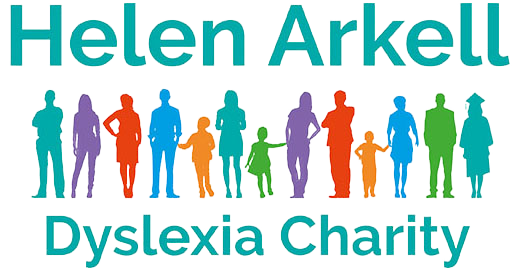CEO blog – remembering Her Majesty the Queen
9 September 2022
Her Majesty Queen Elizabeth II
It is with great sadness that we learn of the death of Her Majesty The Queen. We send our thoughts and heartfelt condolences to all of the Royal Family, in particular to our Royal Patron, HRH Princess Beatrice, at this very sad time.
I was in a meeting of the charity’s finance committee yesterday evening, discussing budgets with Michael-John (our Treasurer) and Pete. We were putting the final touches to our plans for next year, when the news came through. It was Michael-John who saw the notification first, that the Queen had passed away at Balmoral sometime in the afternoon. I will remember that moment all my life, as I’m sure we all will.
I had the extreme honour of meeting the Queen on two occasions. The first was in about 1989, at a Country Fair in Windsor Great Park, where I was manning the display stand at our budding Hearing Dogs for Deaf People charity. She was dressed in woolly jumper and tweed skirt, with a thumb stick in her hand, with well-worn deer antler on the top. She was fascinated to meet Ruffles (Springer Spaniel), Minstrel (Flatcoat Retriever) and Spangle (Collie x), and asked lots of questions. At that time, everyone had heard of Guide Dogs for the Blind, but Hearing Dogs were a completely new concept, having only started up a few years previously. She was keen to learn what the dogs could actually do for a deaf person. Which dogs worked best? Where did we get the dogs from? How did we train them? Had we ever trained a corgi?! (She laughed when she said this, but actually we had). All the time, her hand reached down to stroke the dogs. Minstrel couldn’t resist rolling around on his back with his legs in the air for his tummy to be tickled (typical Flatcoat), so his own recollections of the Queen will have been mostly upside-down.
The other occasion was in 2011. Life had moved on for me by then, and I was now at Canine Partners (dogs again!), where we trained assistance dogs for people with physical disabilities, most of whom used wheelchairs. We had been invited to give a private demonstration of our work to the Queen, at The Royal Mews. Blimey what excitement there was on that day!
So much excitement, that unfortunately I ripped my suit trousers about half an hour before the Queen was due to arrive. Which wasn’t ideal (CEOs tend not to look particularly competent in the presence of royalty when their trousers are ripped). I think I caught them on one of the items of our demonstration equipment, which included a mock-up door for dogs to jump up and open, a mock-up washing machine for dogs to open and unload; and various other bits and bobs which unfortunately I was the only person strong enough to carry – while Julie looked after Xyla (golden retriever), and Jill tended to pup Patsy and adult demo dog Saffy (both labradoodles). Luckily, as a demonstration team we were used to working together, so someone got hold of a needle and thread and some rough repairs were quickly made.
The Queen arrived, and it quickly became apparent that this was going to be a brilliant evening, with no need for the nerves that we had all been feeling in the build-up. In our heads, we had been envisaging that we were welcoming the Queen to one of our demonstrations. But it immediately became apparent the Queen actually saw it that she was welcoming us and our dogs to her home. She was completely relaxed, and so easy to talk to, with a G&T in her hand throughout the evening, made to her exact liking.
Again she made a bee-line for the dogs, and their wheelchair-using owners, while also calling out cheerily to various of our guests as they passed, many of whom she knew, to ask them how they had got on with the betting at the day’s races, how their holiday had been, and whether their horse had recovered from its recent bout of laminitis.
When the time came to give the demonstration, she was situated in pole position, with the very best view, and she watched the dogs intently. Of course the trustees were sweating, in case any dog disgraced itself, but they needn’t have worried, partly because the dogs were absolutely perfect (as we knew they would be) and partly because we knew it didn’t matter to the Queen – she understood animals, and people, and I’m sure would have been equally enthralled if something had gone wrong, so she could have seen what we’d have done about it.
As an aside, she was particularly taken with pup Patsy, who by complete coincidence ended up being partnered about 18 months later with a disabled lady who lives in Scotland, not a million miles from Balmoral.
I will remember that evening for the rest of my life. It’s quite something to have met the Queen. And to be struck both by how completely one-off the situation is, but also how completely normal. She made it that way, by being consummately professional and by being so genuinely interested in people – putting people at their ease. The other thing to note, although I’m not sure it’s the done thing, is just how short she was. I am bending down almost double in all the photos, to be able to hear her clearly in a crowded room, as if I hadn’t, I’d have felt I was towering over her. She was so strong, and yet all contained within such a small package.
The other amazing thing, is that I’m just one person who feels that, in some small way, I knew her. And she went out of her way to meet so many other people, and conduct so many engagements across the world, that there must be millions of people who feel the same way. It is quite a skill to literally live in an ivory tower, and yet have such a connection with the real world, where dogs need walking, Land Rovers need fixing, wellies need pulling out of the mud and people need to be listened to.
Our thoughts go out in particular at this time to Princess Beatrice, the Queen’s granddaughter and who is Patron of our little charity. Princess Beatrice talks very openly about her dyslexia, and is not afraid to be herself in whatever company she keeps. I had a lump in my throat when a clip was shown in last night’s TV coverage, including an interview with Princess Beatrice reminiscing about family gatherings with the Queen and Prince Philip. We are so lucky to have Princess Beatrice as our Patron, and our hearts go out to her at this time. We have lost our Queen; she has lost her Gran.
On behalf of all of us at Helen Arkell Dyslexia Charity, we remember Queen Elizabeth II with great affection and admiration; and we prepare ourselves for the next chapter, with King Charles III on the throne. We wish him all the very best as he prepares to pick up the mantle.
God Save The King!
Andy














